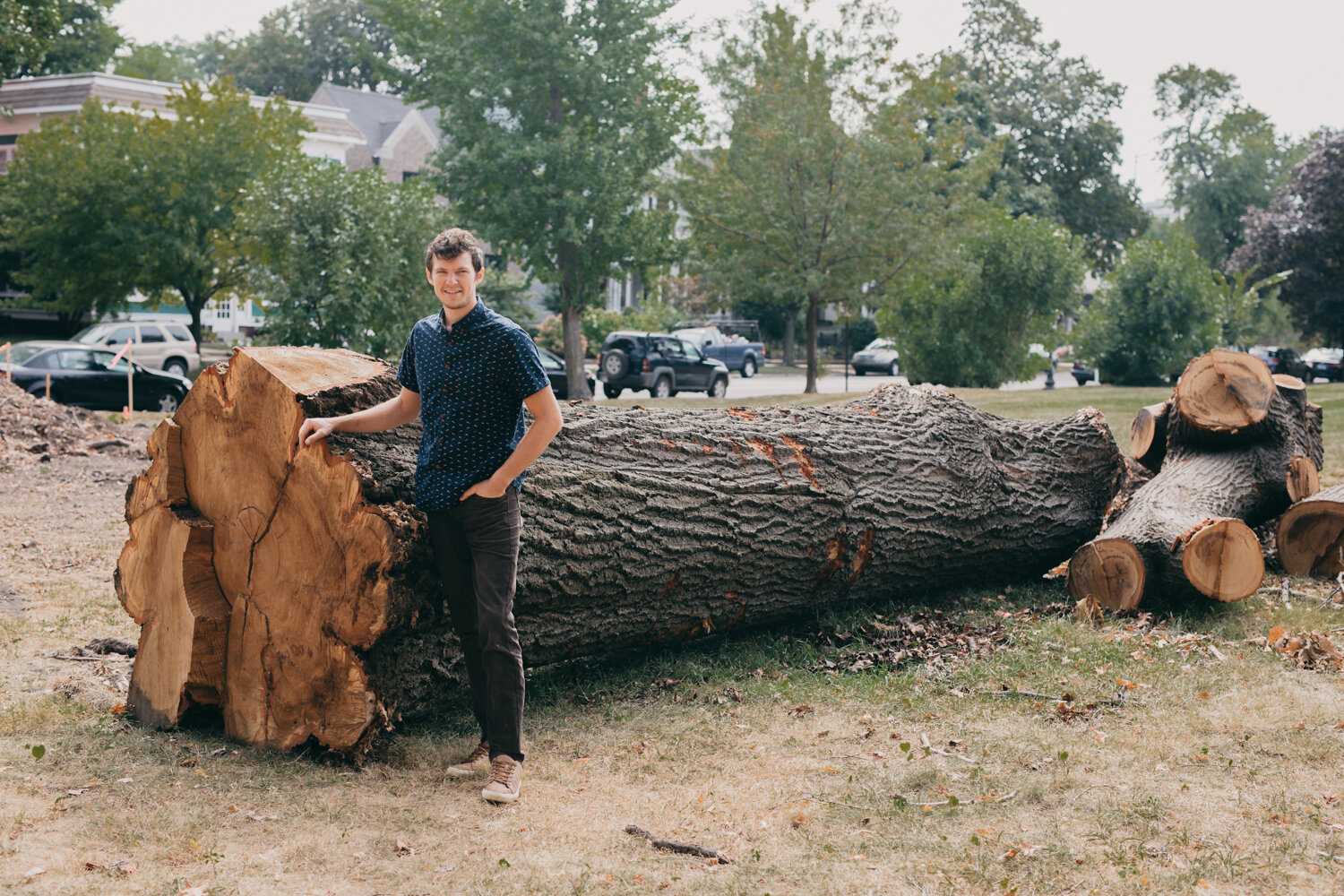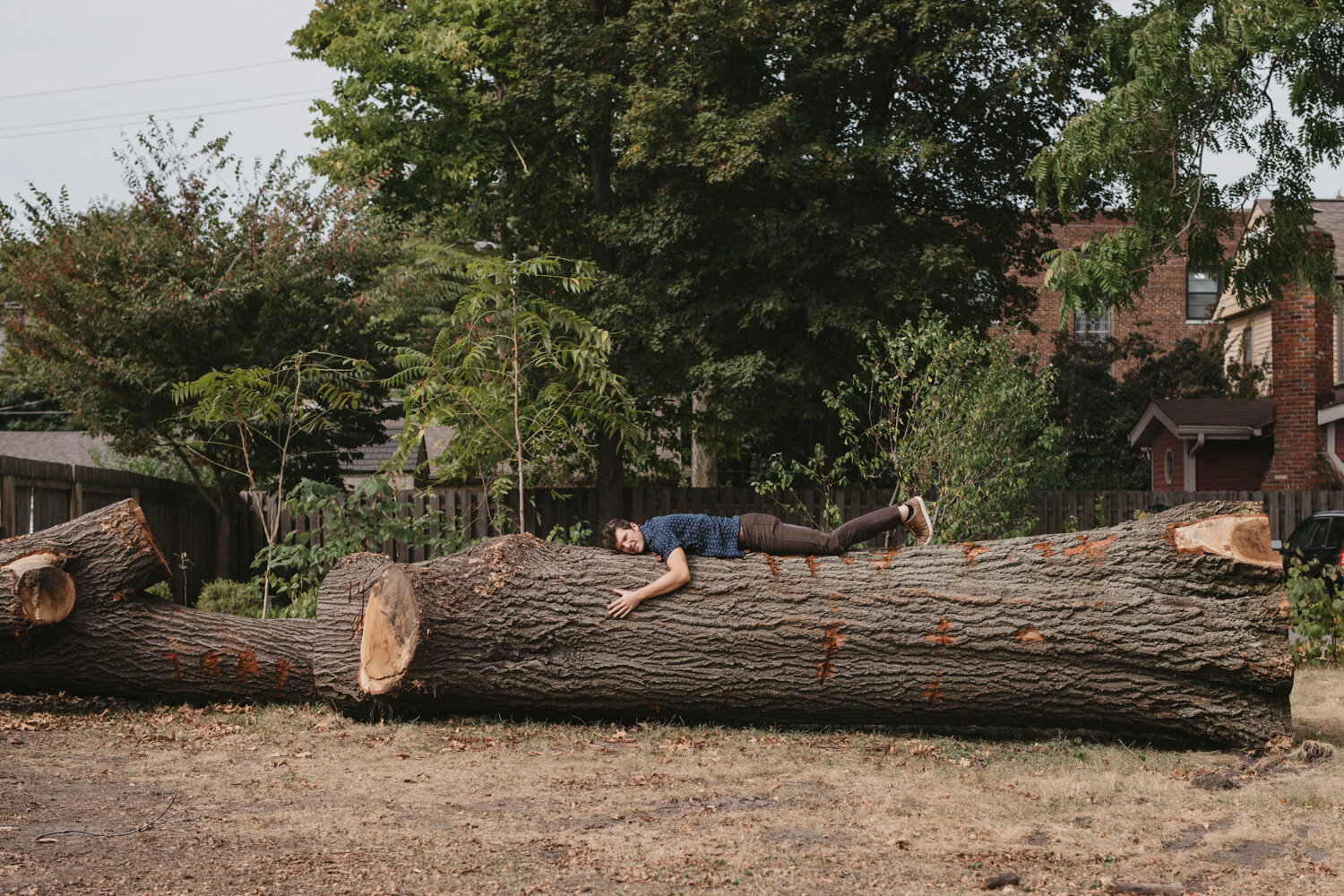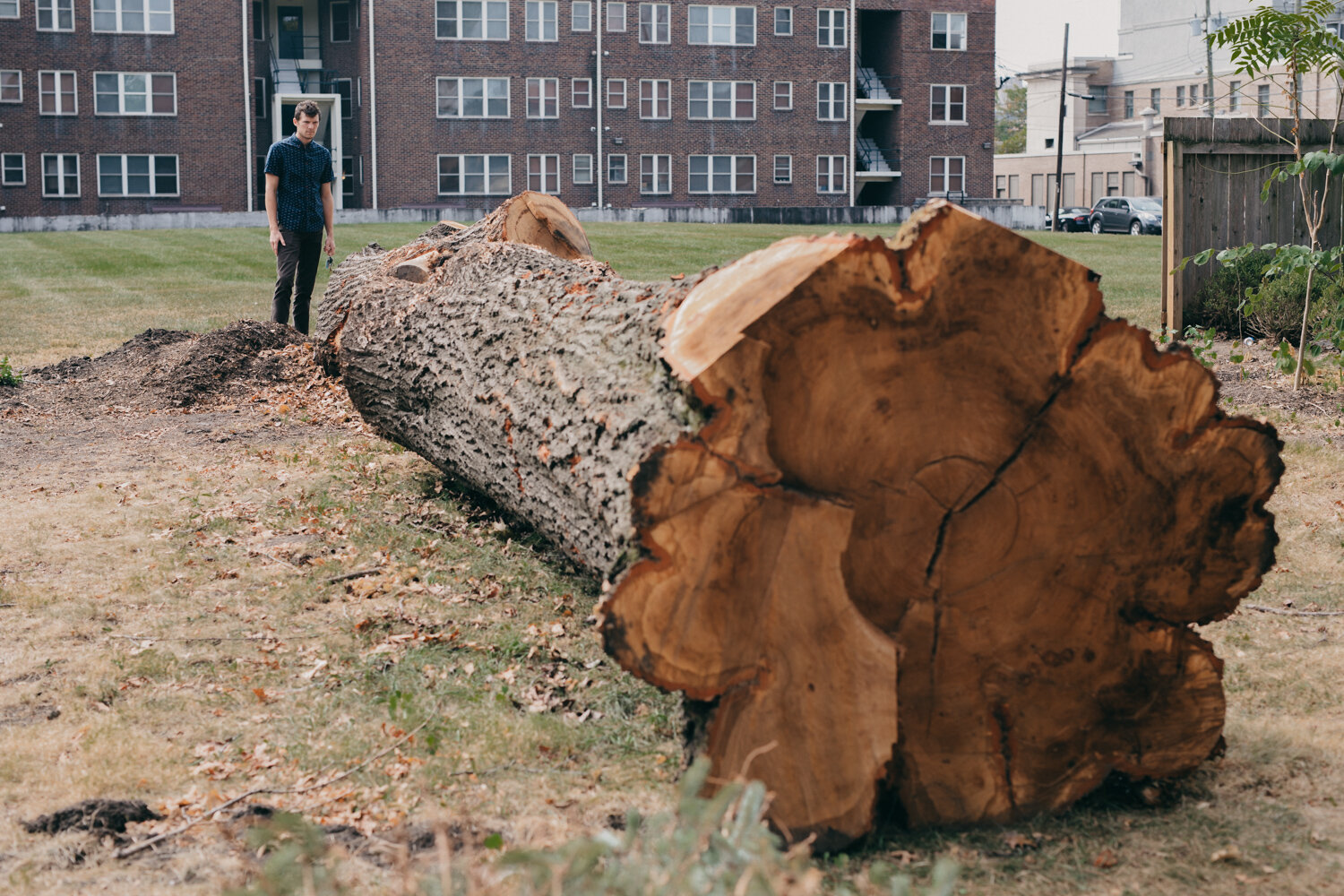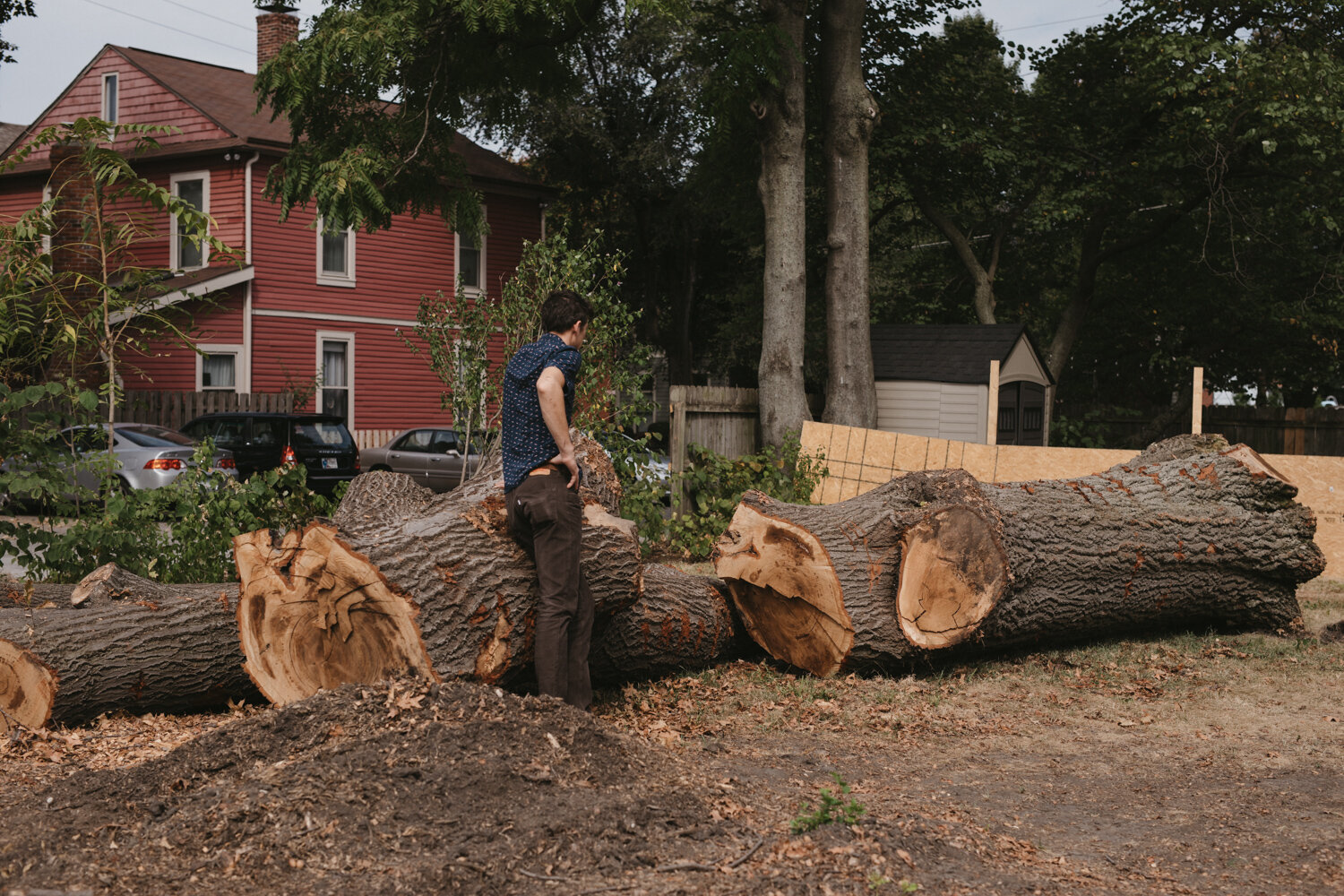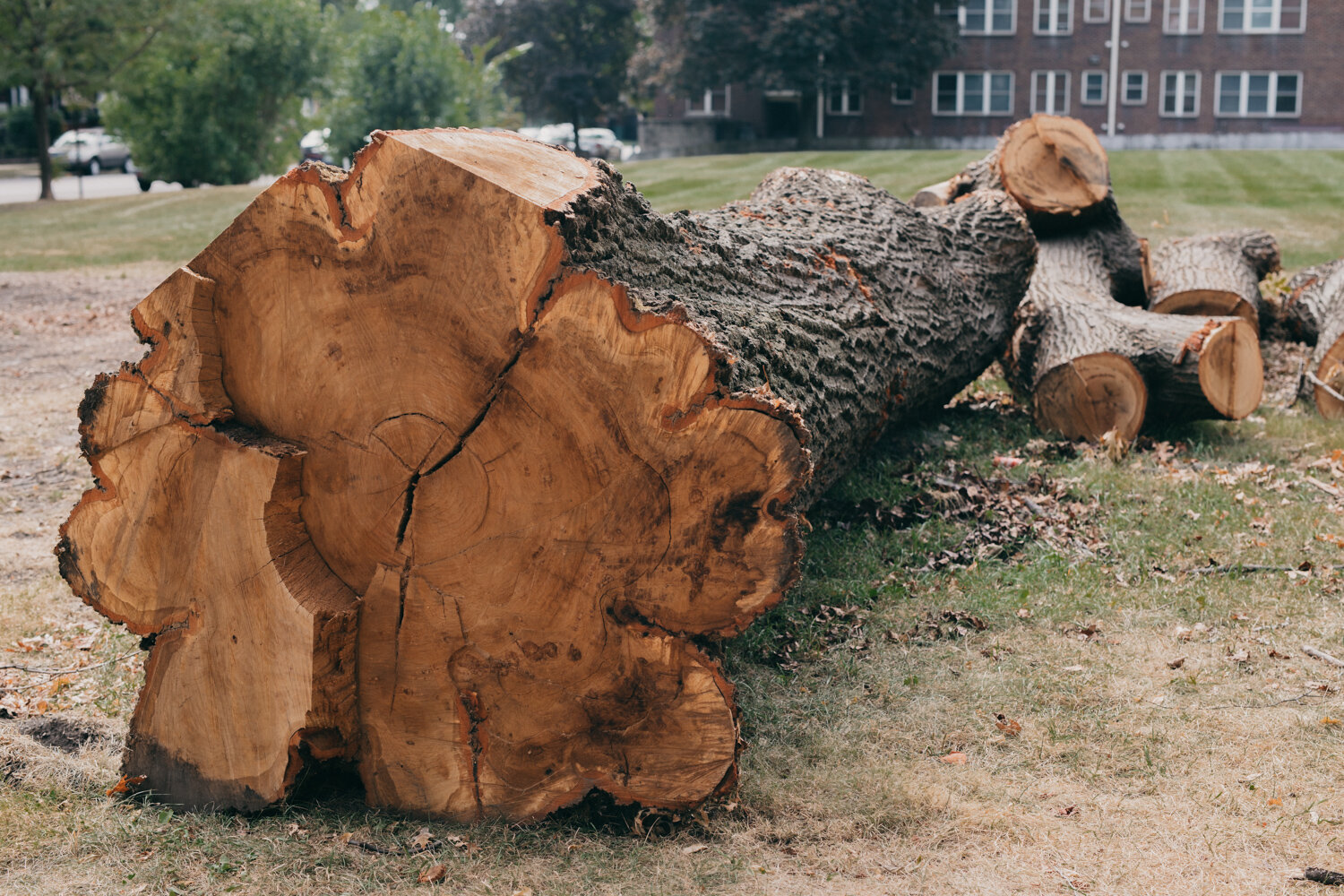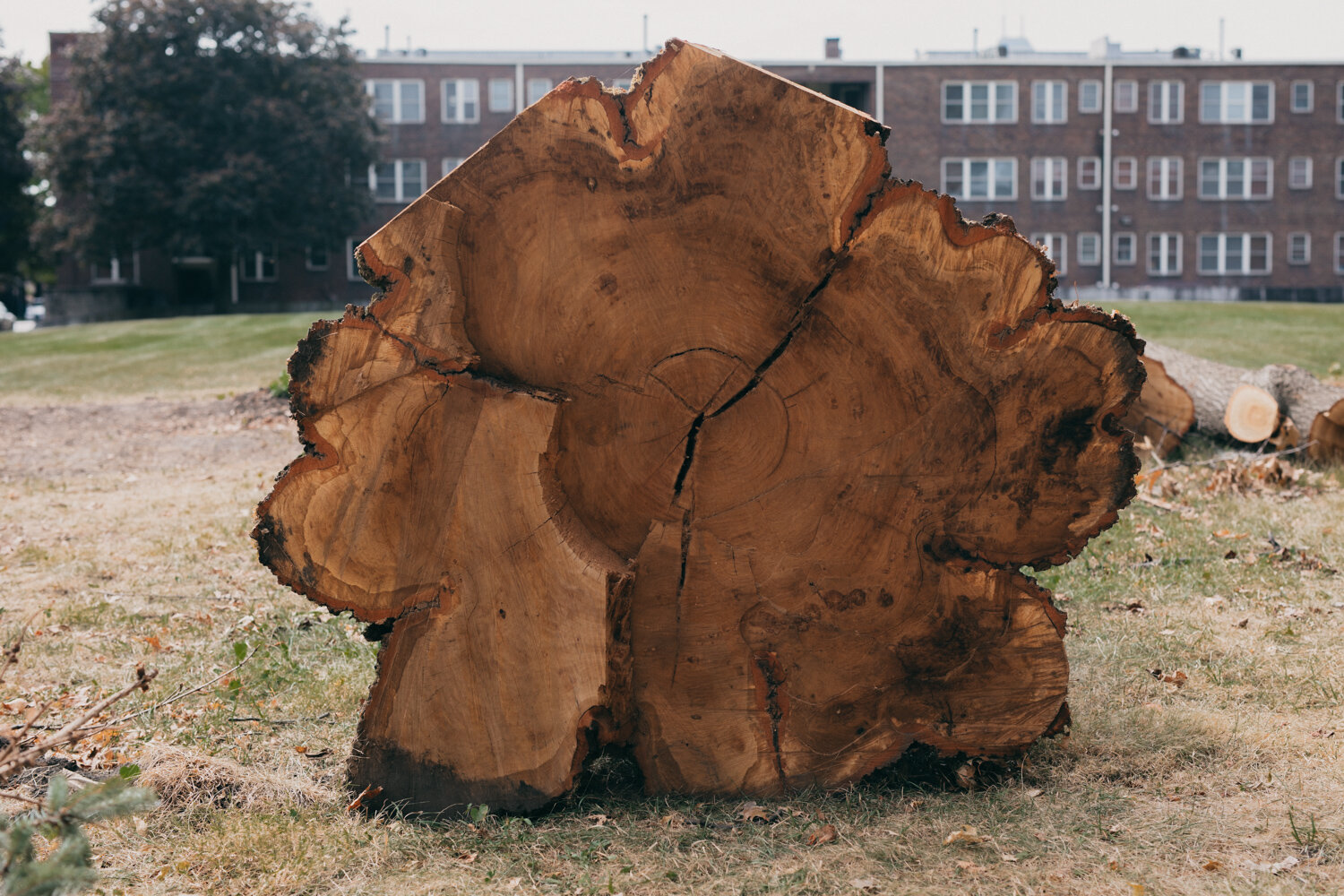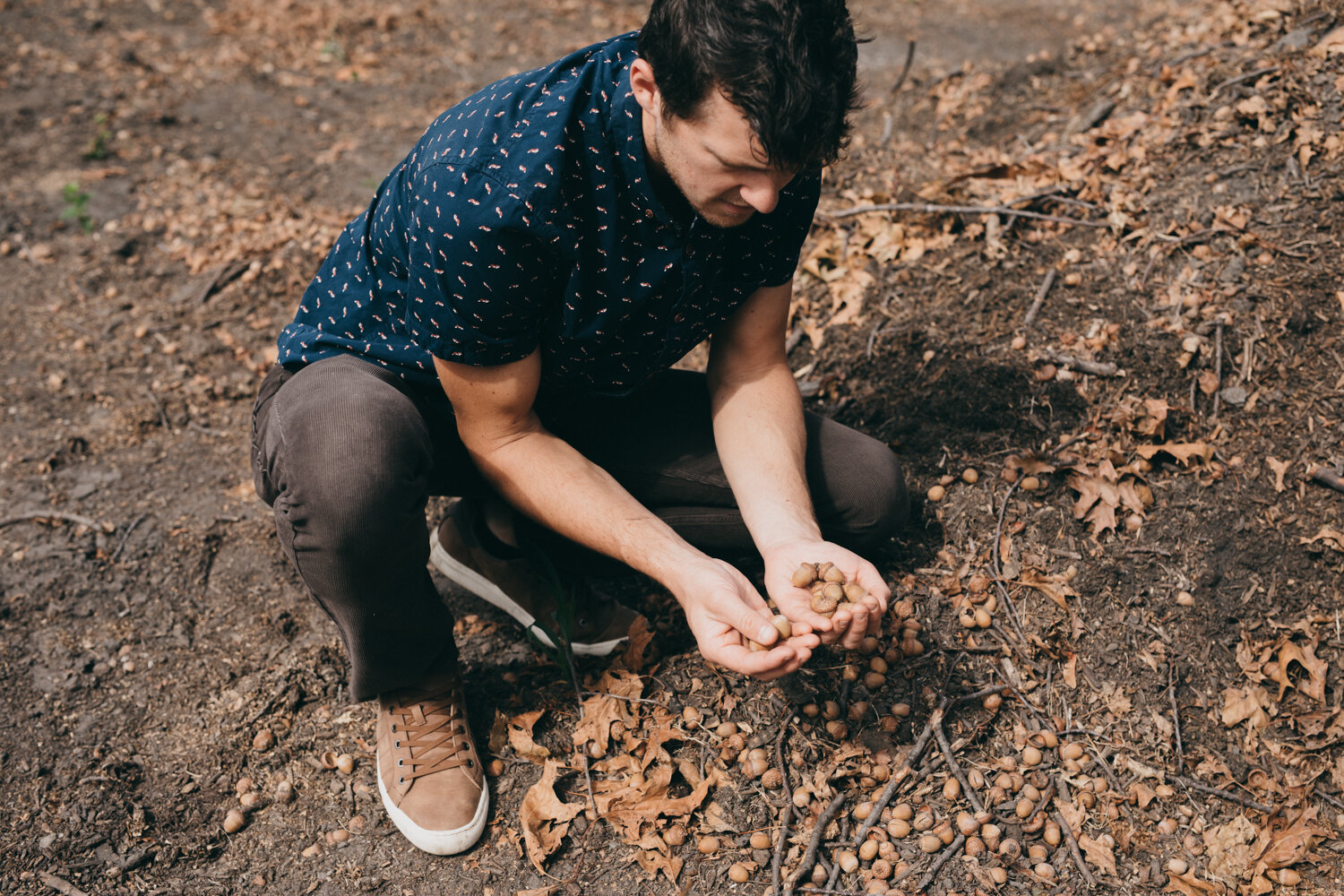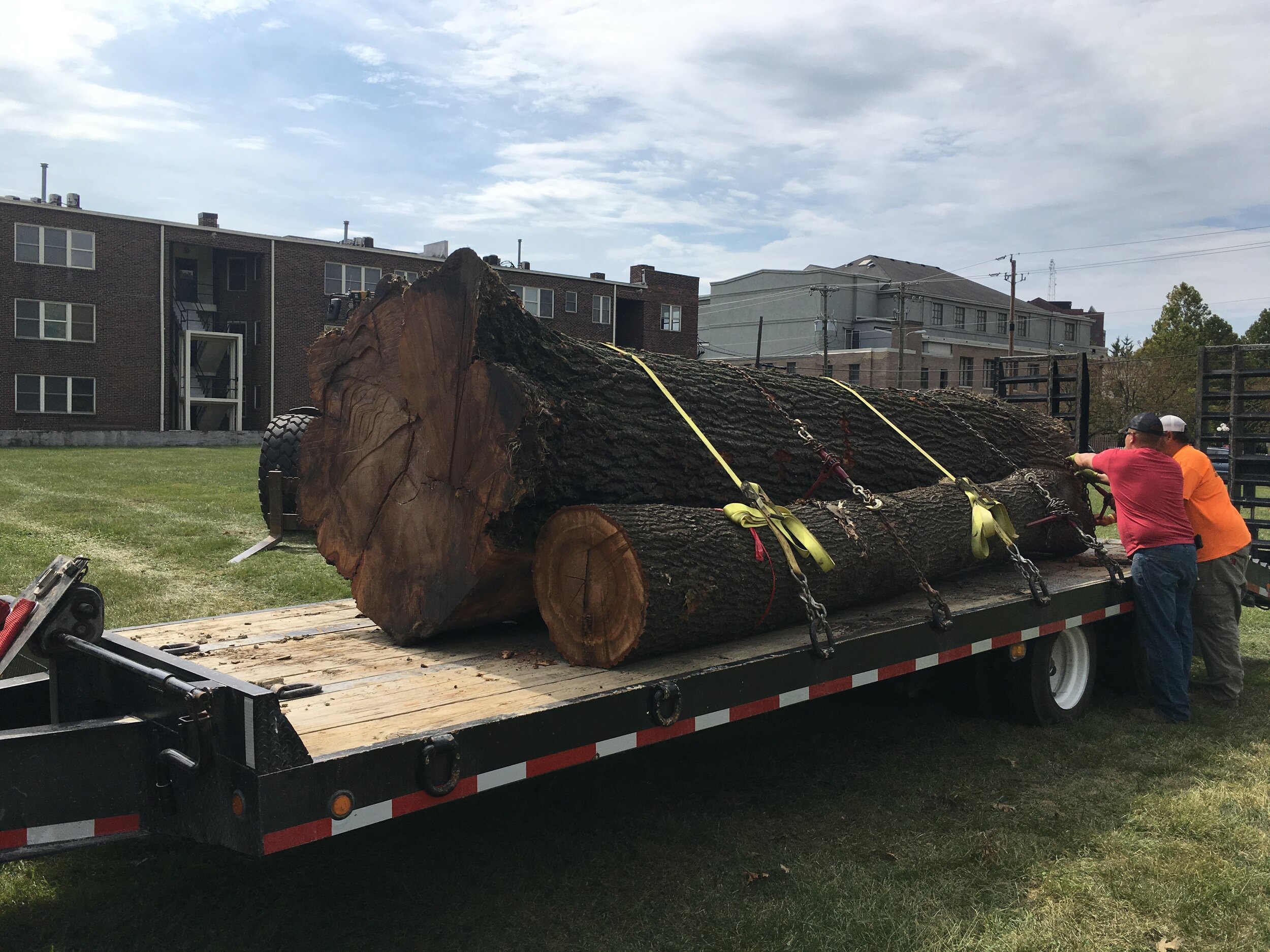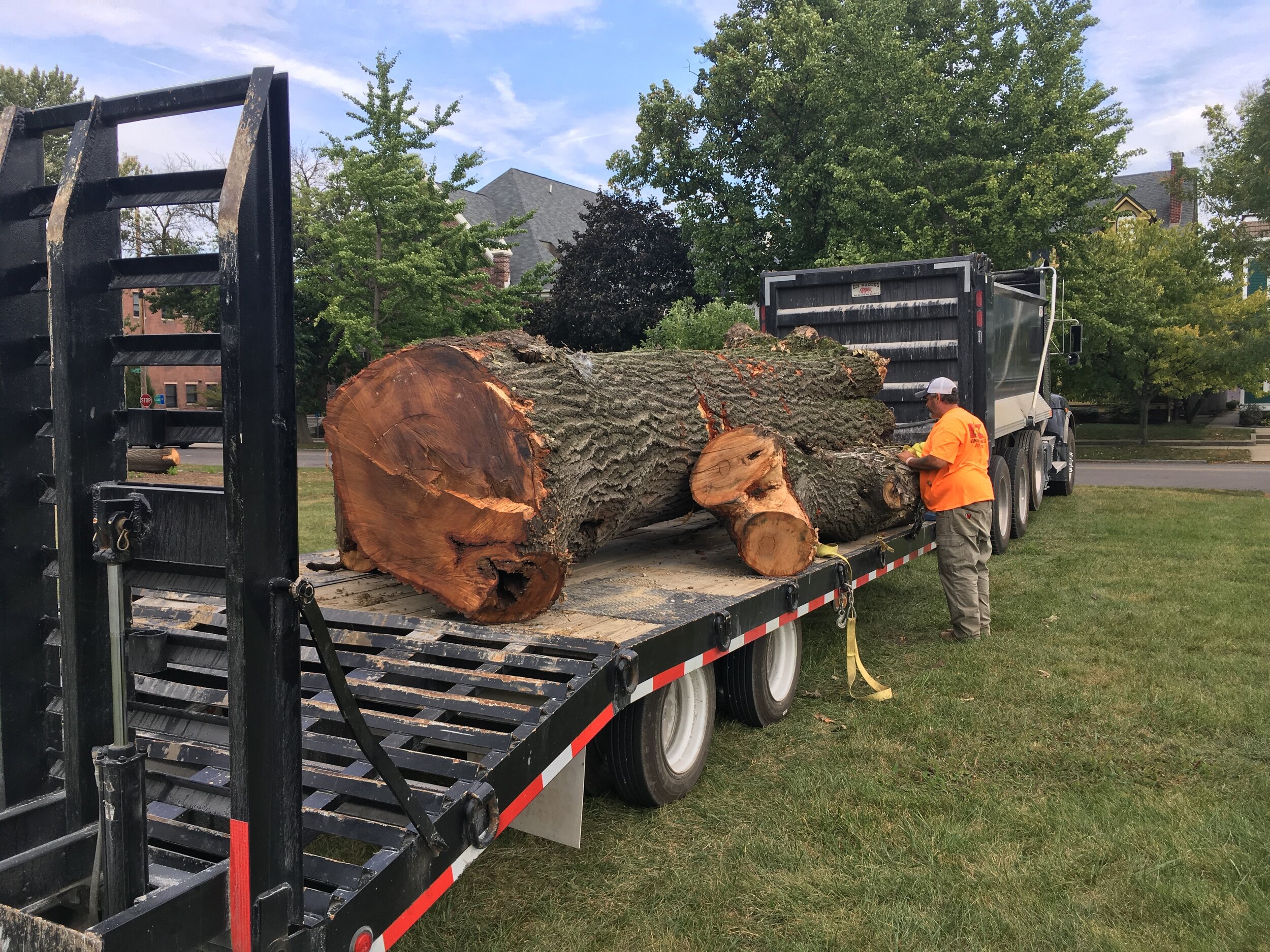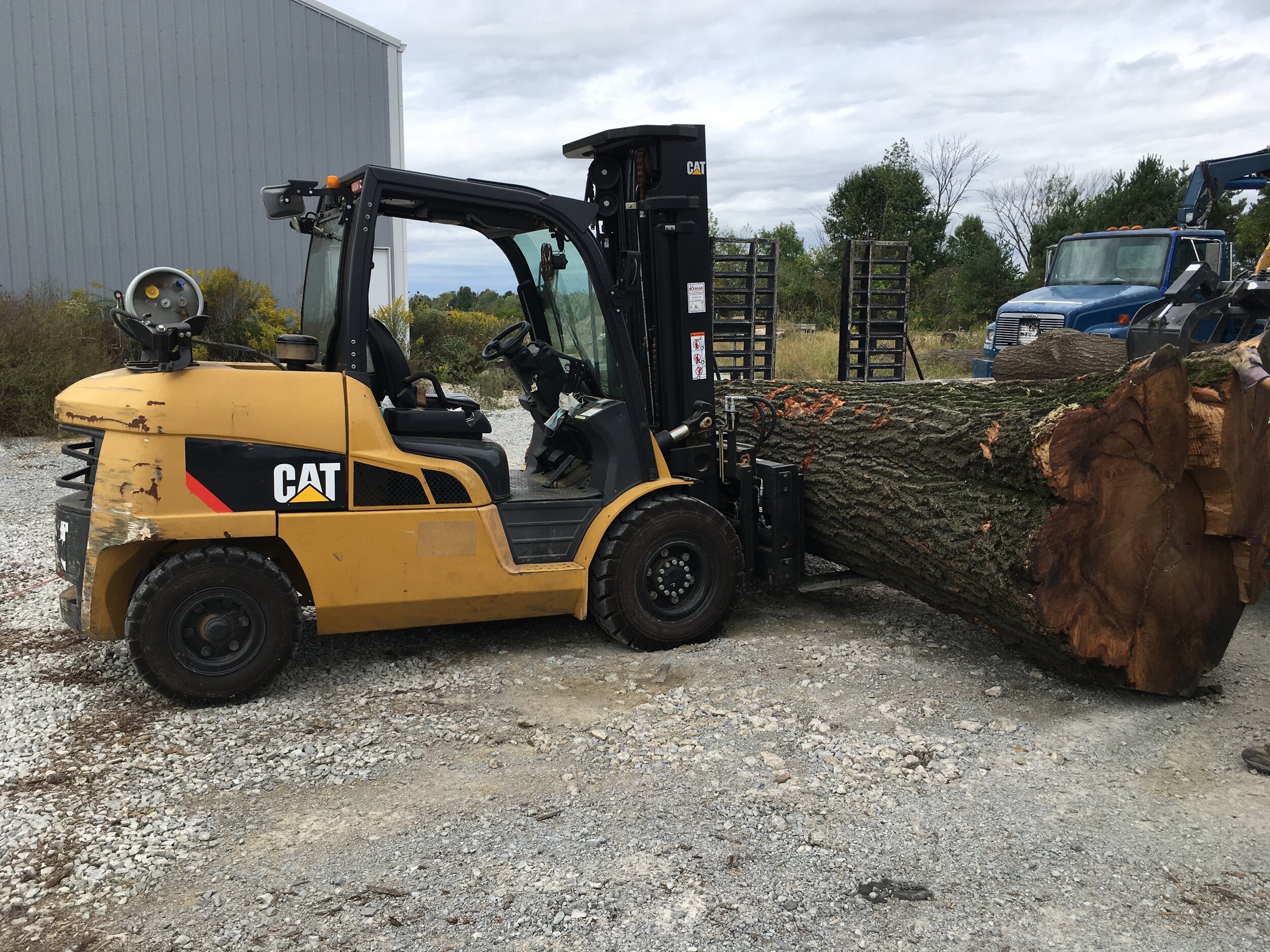Old Red Oak - Indianapolis, IN
This entire tree was used for furniture at Carr Workplaces in Electric Works in Fort Wayne, IN. Electric Works
Milled December, 2019
12th and Alabama St.
I could not be more humbled and thrilled by the good will and generosity I have experienced in Indianapolis. Lately it has felt like Micah and Tony at Compendium Group LLC are some of my biggest fans on the planet. Since they develop so much land and property in the downtown Indianapolis area it is only natural that they inherit large trees that need cut down, and their efforts and willingness to avoid wasting these precious trees is quite a blessing to woodworkers like myself.
Sometimes over a century old, like this ~175 year old red oak, the trees and the wood rendered from them are a reminder to all of us that the city, the home we live in, and/or the earth was not always ours before we were here. This tree is older than all of its’ surrounding homes, the City Market building, and the Soldiers and Sailors Monument. It is even older than Abraham Lincoln’s Gettysburg Address. Just let that sink in for a moment... How many Indianapolis residents enjoyed the shade of this tree throughout its’ life? Was the tree in the middle of farm land before the land was ever developed into The Old Northside neighborhood? If so, then was it growing in a forest before it stood within farmland? Was it planted by a human or a squirrel? Was the tree ever struck by lightning? With a bit of research I am sure some of these types of questions could be answered, but many of them cannot leaving them up to your imagination, I guess.
Some would call it a crying shame that an old, gorgeous tree like this would get cut down for human development, but the reality is that red oaks, and most trees in general, do not live to be hundreds or thousands of years old like our gymnosperm giants on the west coast. All trees eventually die on their own due to natural causes, and some some species sooner than others. Just like us, each tree species have life cycles too. Thus it is worth considering that this old red oak tree might have only had 20-75 years left in its’ life before it started to die, dry, and rot out…dropping SUV sized limbs throughout that woeful death process. It is almost wiser to take a tree like this down while it is manageable. Tree guys don’t call dead trees “widow makers” for no reason.
Like most things, the larger the tree, the heavier the tree. This felled red oak was not your typical “chainsaw mill it on site, and haul it away slab by slab” kind of log. I usually work alone, and I would have had a hard time finding anyone willing to help me with this one! At 18 feet long, DBH of 44”, and ~65” diameter at the crotch and root flare, I estimate this red oak log at around 12,000lbs. This log and all of its’ slabs will not weigh nearly that much once cut and dried, but wet…these slabs would easily weigh in between 350-700lbs each. We are talking at least four grown men just to move one slab around, and this log will yield about 15 slabs. As shown in the video below, you will see that this log required heavy equipment to get it off the ground.
I had quite a time finding someone with the right equipment that was willing to help me get the log out of Compendium Group’s lot too. The first guy to give it a shot, believe it or not, was a wrecker with a pretty big tow truck. Upon snapping a tow cable he gave up on trying to drag it up onto his bed. We should have known better… I felt bad for his lost cable. After several days of scrambling (Compendium Group needed to dig a basement immediately) I finally struck a deal with an excavating company out of New Palestine, IN. Needless to say they had the equipment. They were absolutely perfect for the job since the log was going right to Hood Farm and Sawmill in New Palestine, IN. Score!
Hood Farm and Sawmill has one of the largest bandsaw sawmills in the country with a cutting capacity of 69” wide, and a vacuum kiln that can dry slabs up to 63” wide and 20’ long. The right tools for the job. Vacuum kiln costs are pricey, but they are exceptional at their job: drying wood flat. They dry wood flatter than I have ever seen… This is of utmost importance with a very long 18 foot slab like the ones from this log because you can imagine that any warp, however small, will express itself quite a bit over an 18 foot distance.
This was a fun log to manage, and it feels good to take on a massive log like this. The next monster will be much easier to handle.
I could not be more excited to build a large table out of this piece of Indianapolis, Indiana history!!!
More photos to come soon of the resulting slabs from this historical log….Stay Tuned.
If you are interested in some acorns from this historical tree, please let me know. I will be planting some this fall.
These live edge slabs are currently available for tables and bar tops by December 2020. Contact for more information.
Thank you again, Compendium Group!








